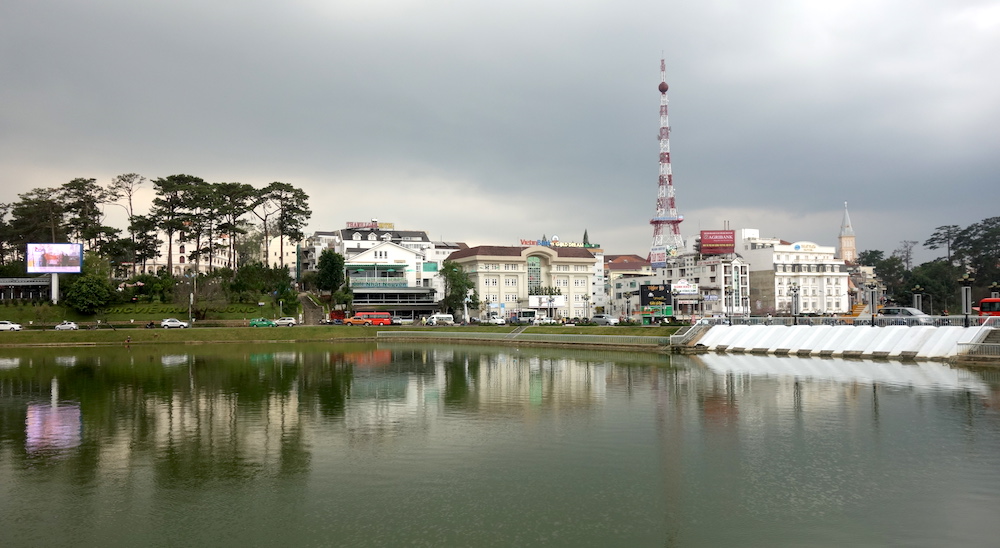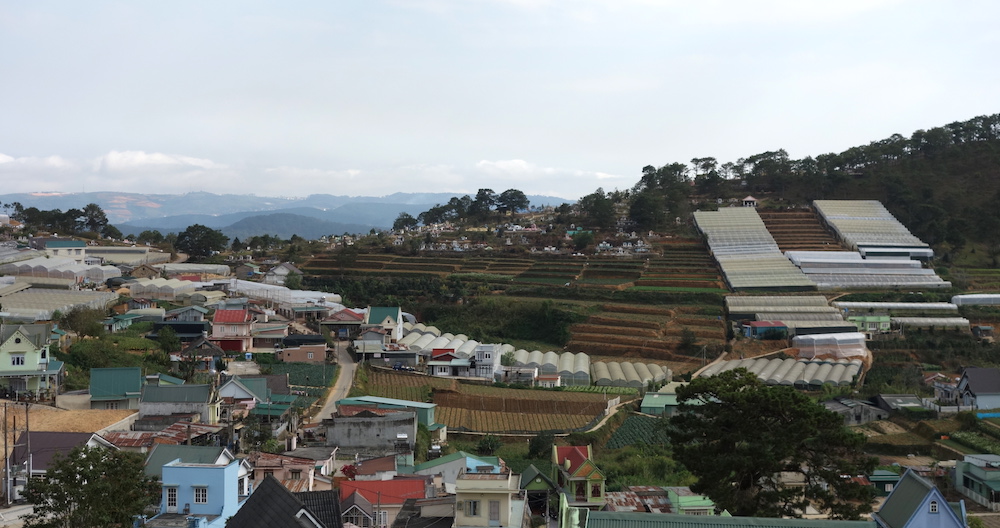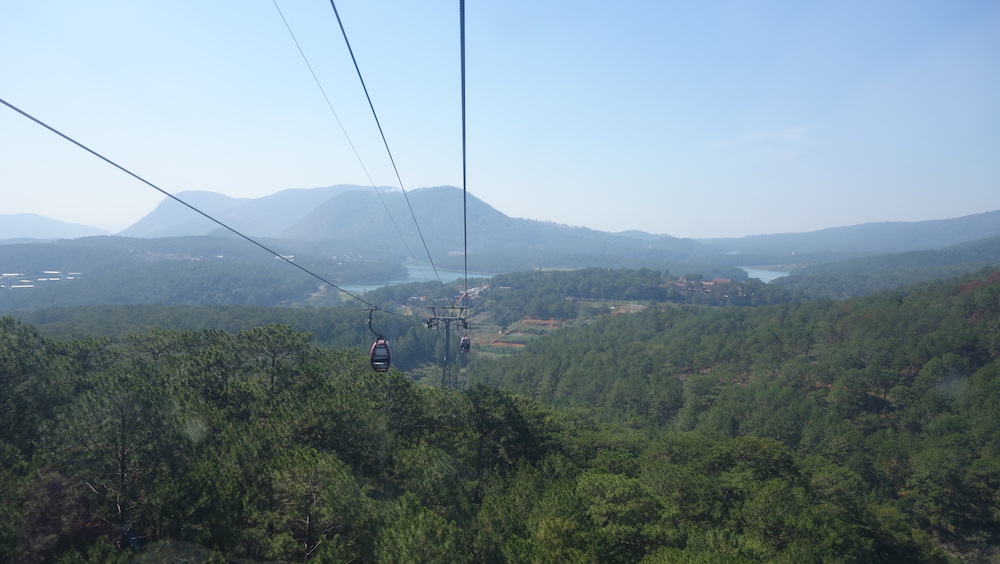Dalat, Vietnam
Sleeper Bus
From Ho Chi Minh City to Đà Lạt you can either fly or take a sleeper bus. We decided to the sleeper bus on the way there and then fly back. In Vietnam you will see sleeper buses all over the place, flying down the highway with bright colored LED lights and camped out at bus depots. They all seem pretty similar, built as double decker buses with three seats per row and two super narrow aisles, most have no bathroom. So in spite of the lack of bathroom these would be great sleeper buses for soccer team of 10 year olds. But if you are taller than 5 feet then there’s just no way you can fit in the reclined seat with your feet sticking out and sleep comfortably. We opted for the three seats all the way in the back on the first level and I managed to get maybe an hour of sleep in a diagonally-faced fetal position. I was not a happy camper. But Asa and Kanako did better. We left at 10:30 and it was supposed to take about 7 hours. Instead it took 5.5 hours so we arrived and were abruptly woken at 4am. Ushered into a shuttle bus that dropped us at our hotel where the hotel staff quite graciously allowed us to crash in a room for the rest of the morning.
Highland Life
 Along the lake in Da Lat town
Along the lake in Da Lat town
Da Lat or Dalat or Đà Lạt is a small and pleasant town in the highlands of southern Vietnam. The high terrain keeps the weather cool and makes for an ideal climate for growing lots of high value agriculture: tea, coffee, artichokes and gazillions of strawberries. The strawberries and lots of other products are grown in the truly endless corrugated waves of greenhouses that populate the hills everywhere outside of the main town.
 Greenhouses outside town
Greenhouses outside town
Like in, Ho Chi Minh City there were coffeeshops everywhere and the occasional tea shop, for tourists, connoisseurs or just simple tastes. We found some good places for local food; pho (noodle soup), banh bao (steamed bun), banh mi (sandwiches with egg, pate or grilled meat)
 Vietnamese coffee
Vietnamese coffee
Sights; Historical and Otherwise
The sights in Da Lat were a little more amusing than amazing, but we had fun.
There is the “Crazy House” (also known as the Hằng Nga Guesthouse), which is a dizzying network of architectural fantasy and insanity, with inspirations from Gaudi and Dali.
 Crazy House
Crazy House
There is the Bao Dai Summer Palace. Bảo Đại was the last feudal king of Vietnam part of the Nguyen Dynasty. Bao Dai’s rule was in the early part of the 20th century until Ho Chi Minh convinced him to abdicate the throne in 1945, but remained with some advisory rule to the newly formed Democratic Republic of Vietnam.
The picturesque Trúc Lâm Temple (Thiền Viện Trúc Lâm) was reachable by a 10-minute cable car ride over rolling pine tree hills. It’s a shame we didn’t have more time to explore much of the temple area. Many places close for lunch time in Vietnam (siesta style) – so we had to rush to leave before the cable car crew took off for lunch But the temple site was an impressive setting that reminded us of temples in Japan.
 Cable car ride to Trúc Lâm Temple
Cable car ride to Trúc Lâm Temple